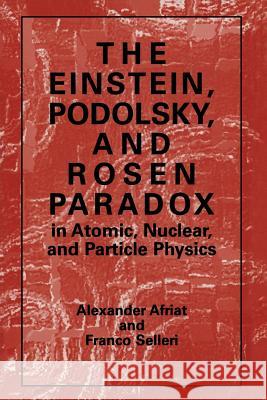The Einstein, Podolsky, and Rosen Paradox in Atomic, Nuclear, and Particle Physics » książka
The Einstein, Podolsky, and Rosen Paradox in Atomic, Nuclear, and Particle Physics
ISBN-13: 9781489902566 / Angielski / Miękka / 2013 / 248 str.
The Einstein, Podolsky, and Rosen Paradox in Atomic, Nuclear, and Particle Physics
ISBN-13: 9781489902566 / Angielski / Miękka / 2013 / 248 str.
(netto: 384,26 VAT: 5%)
Najniższa cena z 30 dni: 385,52 zł
ok. 22 dni roboczych
Bez gwarancji dostawy przed świętami
Darmowa dostawa!
"Paradox" conjures up arrows and tortoises. But it has a speculative, gedanken ring: no one would dream of really conjuring up Achilles to confirm that he catches the tortoise. The paradox of Einstein, Podolsky, and Rosen, however, is capable of empirical test. Attempted experimental resolutions have involved photons, but these are not detected often enough to settle the matter. Kaons are easier to detect and will soon be used to discriminate between quantum mechanics and local realism. The existence ofan objective physical reality, which had disappeared behind the impressive formalism of quantum mechanics, was originally intended to be the central issue of the paradox; locality, like the mathematics used, was just assumed to hold. Quantum mechanics, with its incompatible measurements, was born rather by chance in an atmosphere of great positivistic zeal, in which only the obviously measurable had scientific respectability. Speculation about occult "unobservable" quantities was viewed as vacuous metaphysics, which should surely form no part of a mature scientific attitude. Soon the "unmeasurable, " once only disreputable, vanished altogether. One had first been told not to worry about it; then, as dogma got more carefully defined, one was assured that the unobserved was just not there. This made it easier not to think about it and to avoid hazardous metaphysical temptation.











